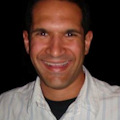Over the course of 18 months, seven firefighters had taken their own lives.
View Firehouse.com's Health & Safety Week Coverage
"I've been on the job for 21 years and only knew of a few before then," Dan DeGryse, director of Local 2's employee assistance program, said. "That was a considerable number."
After realizing the severity of the problem, fire officials created a task force consisting of representatives from the union, department and city.
"We met for several weeks and brainstormed the idea of having some sort of event," he said. "We knew we needed to get the information to the individuals who could potentially commit suicide -- not only the firefighters, but their spouses as well."
"It was a huge undertaking."
What was decided on was an event that would be become known as "Family Focus Day."
DeGryse said the event was designed to allow a forum for the firefighters and their families to come and get information from different organizations and groups that could help with an array of issues including divorce, financial problems and substance abuse.
"When an individual came in, they could see all of the resources," he said. "Even if they didn't want to talk to someone there, they could pick up a card and call them later."
There were also close to a half dozen presenters on hand to talk about various topics during the 10 a.m. to 3 p.m. event held at the fire academy early last year.
With the details ironed out, the big question was how they would get people to come.
"It's something that's not really talked about," he said, noting the shame associated with suicides and the fact that some firefighters could be fearful of losing their jobs.
In order to get people in the door, they offered a free lunch and made enough chili and hot dogs to feed 400 people and had door prizes and activities for the children.
"Even with all that, we figured if we could get 100 people it'll be a success," he said.
Much to their surprise, close to 800 people attended the event. The second Family Focus Day was held on Feb. 28 and close to 900 showed up.
While DeGryse said some people contended that the firefighters and their families just came for the freebees, he noted that just getting them there could make all the difference.
"Whatever reason they came for, they were there," he said. "It's all about connecting people with the proper resources."
One therapist told him she talked to between 30 to 40 people, he said. "That's huge"
"It's hard, in even that environment, to hold a personal conversation with a doctor or chaplain, but it did happen," he said. "If we prevented even just one person from committing suicide, it was a success."
DeGryse said that most people are reactionary when it comes to suicides and that his department was as well, but that they responded and are coming through now.
"We've created an open door forum and it's been overwhelmingly successful, he said."
Since the rash of seven suicides, there have been two more. One occurred shortly after the initial Family Focus Day was held and another just recently.
"The reality is, we're not going to stop it," he said. "There is a suicide risk assessment, but first you have to get people to take it, then you have to get them to answer truthfully."
He says that now, anyone who comes through the door for substance abuse is asked if they've had thoughts of committing suicide; something that previously was not done.
"The majority of the guys had well over 20 years on the job and some were close to retirement," he said. "I don't know if you can make any sense of it. How can you predict it?"
Even with the classic signs, he said it's hard to prevent. Two of the seven firefighters who committed suicide were already being treated in a psychiatric hospital and committed suicide while in the hospital.
"We have to get away from the shame associated with suicide and be willing to look at it and discuss it," he said. "You can't just forget about it and try to push it away."
He said the union's EAP goes out to the firehouses and talks to the firefighters about the issues, but that with 100 firehouses and three shifts, it's no easy task.
"It's all about being visible."
About the Author
Paul Peluso
Staff Writer
Paul Peluso is a Firehouse.com staff writer and has worked for the Web site since 2006. Previously, he worked as a reporter for several community newspapers located in the suburbs of Baltimore, Md. Since joining the newsteam, Paul has covered various fire service issues including fire sprinklers, grants, line of duty deaths and technology. While he started out at the Beltsville, Md. office, he has since moved to Florida where he works out of his home office in Tampa.
